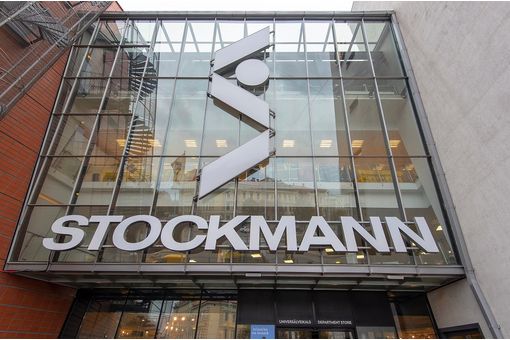Interviews
'We need to look at T&G sector from multi-disciplinary angle' – Dr Roy, Visionary
06 Feb '09
6 min read
The textile industry dates back to more than 700 years when cotton was woven for the first time and it is now more than 200 years since the first mechanized textile machinery was introduced by England. Since then, the industry, worldwide has gone through many ups and downs. The power centre of manufacturing has shifted from the US and Europe to the countries of Asia. India too had a glorious past till the early 80's, with Ahmedabad in Gujarat, called the 'Manchester of the East'.
But now the focus in manufacturing has shifted from other parts of India to the Southern state of Tamil Nadu, which today has 50 percent of all textile production units in the country. Even the Indian textile industry has had its own set of challenges, in the 80's as well as now. To understand about the challenges facing the Indian textile industry and technological trends that are set to change the course of the industry, fibre2fashion.com spoke to Dr Roy.
Dr PR Roy is a PhD in textiles from the University of Manchester, UK and a former Chief Executive Officer of the Lalbhai group owned, Ahmedabad based, Arvind Mills Ltd and has over 40 years of rich experience in industry, research and teaching. He is considered an expert in denim manufacturing technology and is currently working as an independent management consultant for textile industries globally.
We started the interview, by asking Dr Roy, to give us some glimpses of challenges faced by global textile industry today and steps to be taken to overcome this situation. He replied in detail by saying, “In any walks of life including business, challenges particularly in an economic meltdown scenario bring out a fresh leadership dilemma. For example, either one continues with the same vigour in his present business and pursues the growth strategy as planned or probes in depth the options of cost cutting including down-sizing and hold or abandon all his future plans.
Textile Industry, as we know has been facing such challenges in the last few decades. Being confronted with such challenges in the 80s ( no meltdown ) where the threat came from many Asian and South American countries, the global textile leaders opted for RTAs , FTAs , OPTs etc, to keep their flags flying, whereas the emerging textile countries sensing a winning scenario started looking at large scale investments both in textiles and apparels .
In between, relocating and outsourcing turned out to be buzzwords and in fact provided an opportunity to the emerging economies to learn in depth the tricks of the trade. An entirely new textile world emerged with the abolition of quotas, although immediately followed by some major protective measures against China. This history of the textile industry was one-sided where the slowing down or withdrawal of one side gave a tremendous scope to the other side to outbeat or outsmart them in their own game. The present scenario is somewhat universal putting every global leader on the same side (though the degree of concerns may vary) and being questioned ' Quo Vadis '?
But now the focus in manufacturing has shifted from other parts of India to the Southern state of Tamil Nadu, which today has 50 percent of all textile production units in the country. Even the Indian textile industry has had its own set of challenges, in the 80's as well as now. To understand about the challenges facing the Indian textile industry and technological trends that are set to change the course of the industry, fibre2fashion.com spoke to Dr Roy.
Dr PR Roy is a PhD in textiles from the University of Manchester, UK and a former Chief Executive Officer of the Lalbhai group owned, Ahmedabad based, Arvind Mills Ltd and has over 40 years of rich experience in industry, research and teaching. He is considered an expert in denim manufacturing technology and is currently working as an independent management consultant for textile industries globally.
We started the interview, by asking Dr Roy, to give us some glimpses of challenges faced by global textile industry today and steps to be taken to overcome this situation. He replied in detail by saying, “In any walks of life including business, challenges particularly in an economic meltdown scenario bring out a fresh leadership dilemma. For example, either one continues with the same vigour in his present business and pursues the growth strategy as planned or probes in depth the options of cost cutting including down-sizing and hold or abandon all his future plans.
Textile Industry, as we know has been facing such challenges in the last few decades. Being confronted with such challenges in the 80s ( no meltdown ) where the threat came from many Asian and South American countries, the global textile leaders opted for RTAs , FTAs , OPTs etc, to keep their flags flying, whereas the emerging textile countries sensing a winning scenario started looking at large scale investments both in textiles and apparels .
In between, relocating and outsourcing turned out to be buzzwords and in fact provided an opportunity to the emerging economies to learn in depth the tricks of the trade. An entirely new textile world emerged with the abolition of quotas, although immediately followed by some major protective measures against China. This history of the textile industry was one-sided where the slowing down or withdrawal of one side gave a tremendous scope to the other side to outbeat or outsmart them in their own game. The present scenario is somewhat universal putting every global leader on the same side (though the degree of concerns may vary) and being questioned ' Quo Vadis '?
Popular News
Leave your Comments
Editor’s Pick
Apparel/Garments
Apr 28, 2024
2 min read
Retail
Apr 28, 2024
2 min read
Apparel/Garments
Apr 28, 2024
2 min read
































-Ltd..jpg?tr=w-120,h-60,c-at_max,cm-pad_resize,bg-ffffff)





.jpg?tr=w-120,h-60,c-at_max,cm-pad_resize,bg-ffffff)
.jpg?tr=w-120,h-60,c-at_max,cm-pad_resize,bg-ffffff)






